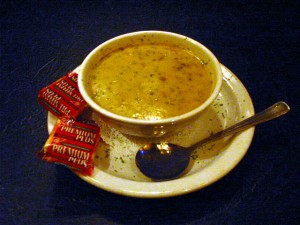Compensation structures for highly paid executives in public companies are often a tangle of legalese, difficult to parse. The Security and Exchange Commission (SEC) requires that all public companies detail the compensation of their highest paid executives, but that doesn’t mean that what the companies report is straightforward. In recent years, many companies have gone from giving executives large sums of money each year, regardless of company performance, to trying to create a compensation structure that depends significantly upon the actual performance of the executive and the success of the company.
One example of this is the compensation package that Meg Whitman received when she joined Hewlett Packard in September 2011 as Chief Executive Officer. The former CEO of EBAY, Meg Whitman ran an unsuccessful campaign for California Governor in 2010. She was brought on as CEO at HP after a year on their board.
Ms. Whitman will receive $1 a year in salary. According to the Wall Street Journal, the $1-a-year CEO isn’t uncommon at tech companies. Eric Schmidt, Larry Page and Sergey Brin at Google and Apple CEO Steve Jobs have also worked for $1 a year.
However, one dollar is just the beginning of her potential compensation. She will also receive an annual bonus of at least $2.4 million with the possibility of increasing that bonus up to $6 million depending on the cash flow performance of the company.
The biggest percent of her compensation package involves stock options. Stock options have been around quite a while as an executive incentive tool. Options require the executive to purchase the stock with her own money at a predetermined “exercise price”. The options are only valuable if the market value of the stock she purchases is greater than her exercise price. If the market value of the stock has gone down from the exercise price, she earns nothing or could lose money by choosing to exercise the option.
Ms. Whitman received an option to purchase 1.9 million shares of HP. The exercise price will be equal to the market value of the shares on the date she received the options. The options will vest over an eight-year period; however, they will only be considered fully vested if HP’s share price rises by 40 percent or more. In September when she took the job, that number of shares was worth $45.2 million.
100,000 of those shares will vest on each of the first three anniversaries of her hire date if she stays with the company. 800,000 shares will vest after the first year, IF HP’s share price has risen 20 percent and stayed that high for at least 20 days. The final 800,000 shares will vest on the second anniversary of her hire, IF HP’s share price has risen 40 percent for more than 20 days. If she succeeds in raising HP’s share price 40 percent in the next eight years, she would make profit of $17 million.
This type of compensation package reflects companies’ desire in recent times to compensate executives based on what they can do for the company, not just because she is friends with the directors on her board. Ideally, this should save the company money in the short term and encourage high performance from the executive in question.
Hewlett Packard also included an incentive for Ms. Whitman to stay with the company for the long haul, making her severance benefit payment 1.5 times the sum of her annual base salary, or $1.50 plus the average of her bonuses paid in the last three years. If she left before the first year was out, she would receive less than $2 in compensation. That would certainly make me want to stay!
Here’s hoping the company has learned a lesson from its handling of Ms. Whitman’s sacked predecessor, Leo Apotheker, whose severance was $9.6 million and $3.5 million in stock even those his performance was dismal.






